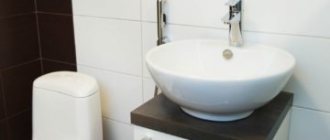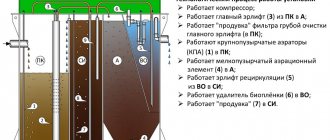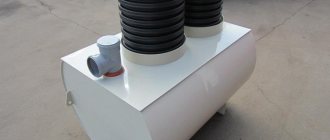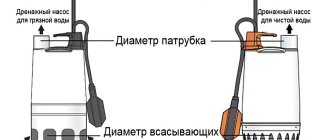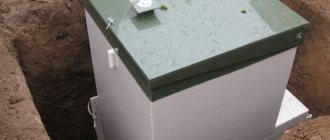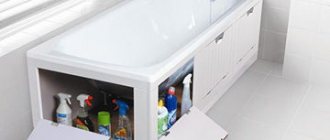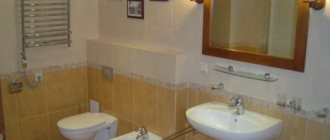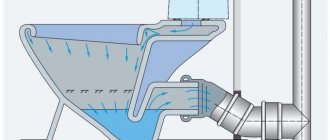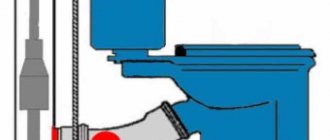A dry toilet is a device for the installation of which you do not need to build a cleaning system or lay a pipeline. In addition to independence from the central sewerage system, the list of advantages includes an increased level of comfort, ease of use, hygiene and compactness.
Dry toilets are especially popular among country property owners.
What is a dry closet?
A plumbing fixture that, thanks to its compact structure, can be installed in apartment rooms and even in the interior of large vehicles, and can also be moved from place to place by the efforts of one person. Human waste can be disposed of in various ways:
- dry out
- freeze
- compost
- chemically decompose
When planning to purchase a home dry closet, you should study the functionality of each model and make a choice that fully satisfies the requirements of the future owner.
- Firstly, the volume of the lower reservoir, taking into account the number of users. The more there are, the more capacious the tank should be.
- Secondly, a type of pump that supplies water for flushing. Cheap piston models require some physical strength to create sufficient pressure. Whereas to use more expensive electric pumps, just one press of a button on the body or remote control of the dry closet is enough.
- Thirdly, the presence of an indication of the filling of the lower tank of the dry closet. It would seem such a small thing. However, after the first overflow of the contents of the lower tank onto the floor or carpet, the realization of its necessity comes.
You should also pay attention to the pressure-reducing valve, with which you can increase the comfort of disposal of natural waste.
Storage
If you do not use the dry closet for a long time, you must store it properly by first emptying the storage and drain tank of liquid, rinsing it and letting it dry, removing the batteries and lubricating all the components of the equipment with oil. In winter, a dry toilet can be used if it is located in a warm room, because in the cold the plastic can crack and become unusable.
Dry toilets are an indispensable thing for country houses, dachas, and long trips . Depending on the type of construction and the method of processing waste, biotoilets can be used both inside and outside the building.
Dry toilet for an elderly person
This device is especially important for people with special needs and their caregivers. After all, there is a big difference: sitting the patient on a bucket or on a comfortable toilet seat, and also, taking out the pan after each bowel movement or cleaning the lower tank of its contents a couple of times a month.
In addition, modern models are equipped with a lot of useful functions that will greatly facilitate the life of a disabled person or a seriously ill patient undergoing follow-up treatment in a home hospital: spraying an aromatic composition, seat heating, lighting, an automated lid that opens and closes at the press of a button, remote control, USB- connectors on the case for powering various small electrical devices.
Advantages and disadvantages
Speaking in general about dry toilets, we can note a number of advantages:
- due to its small size, the dry closet does not create problems with transportation;
- mobility simplifies the procedure for their installation and dismantling;
- no unpleasant odors arise during use;
- no problems with maintenance;
- low price.
To find out what problems you may encounter after purchasing a dry closet for your home, it is also useful to familiarize yourself with their disadvantages:
- if a dry closet is purchased for a large family, then you need to prepare for frequent replacement of the lower tank;
- installation of such structures can only be carried out in rooms where positive temperatures are maintained;
- When using such toilets, men may encounter certain discomfort due to the lack of certain elements.
Most often, after purchasing a dry closet, the dacha owner does not feel disappointed with the decision made. First of all, such a design will be appreciated in those families where disabled people live. Having such an invention at hand, people with disabilities will be able to cope with their natural needs much more easily. A dry toilet would also be a good solution for a summer cottage, where work on its improvement has only recently begun.
Types of dry toilet designs for the home
There are three main types of dry closets:
- electric
- liquid
- peat
Each of them has its own characteristics, positive and negative sides, which are discussed in more detail below.
Liquid
In such dry closets, for the purpose of waste disposal, various chemical reagents are used, converting the entire contents of the lower tank into a homogeneous liquid. The following compositions are used as the active ingredient responsible for the destruction of biomaterial:
- based on ammonium, breaking down organic compounds in the anaerobic environment of the lower tank for 5 – 7 days
- biological preparations (nutrient solution contaminated with active strains of bacteria) represent the most environmentally safe way to disintegrate organic matter, followed by its conversion into valuable fertilizer
- based on formaldehyde, which are highly toxic and therefore approved for use only if the liquid is discharged into a closed sewer.
The advantage of using this type of device is its simplicity, complete destruction of unpleasant odors, and compact structure, which allows the installation of dry closets with a sufficient volume of lower capacity not only in homes, but also on yachts and airplanes.
Peat
The filler for such dry toilets is peat, peat-sawdust mixture, or other similar compositions. During the “operation” of the device, they react with human waste, turning into almost odorless compost. The rating of dry toilets for the home puts them in first place in terms of price and convenience. But, at the same time, it should be remembered that the filler will not cope with the liquid fraction completely, so you should opt for models that are able to separate the liquid in the lower container and accumulate it in a separate tank.
Electric
The operating principle of this device is to burn (dry) or freeze human waste, depending on the model, with parallel ventilation. After considering how an electric dry closet works, it becomes clear that it is worth giving preference to drying models that separate waste into solid and liquid fractions, turning the first into ash, settling into the lower tank and draining the second into a separate container. This approach will save a lot of energy. As for freezing models, their eternal problem is the disposal of frozen excrement.
Design and principle of operation of electric dry closets with a combustion chamber
Electric dry closets are equipped with a seat for separate collection of urine and feces. The seat is divided into two parts - front and rear with a flap. When you press a miniature button or pedal, the flap opens and solid waste falls directly into the collection container.
Electric dry toilets
Inside the receiver container there are heating elements, thanks to which all waste turns into ash. The waste combustion time is about one and a half hours. For about 3 months of continuous use of a dry toilet by one person, about 200 grams of ash can accumulate, which means extremely rare maintenance and cleaning of the tank. But for better performance, it is recommended to clean the ash tray once a week.
Electric dry toilets
Electric dry closets require not only connection to a power source, but also the organization of an exhaust ventilation pipe, through which odors will evaporate from the storage tank without penetrating into the room.
Most models require the installation of disposable bags under the toilet seat. These packages burn together with the contents after pressing a special button.
Electric dry closets are not afraid of power outages. The included batteries ensure uninterrupted operation.
Video – Electric dry toilets
Useful tips
For electric models, the main requirements are an uninterrupted power supply and good ventilation. It is worth remembering that when drying the solid component of human waste, deodorization does not occur and the foul-smelling air must be promptly removed somewhere.
An electric dry closet can only be used in a sitting position. Since the liquid waste tank is located in front of the toilet, it is easy for a person in poor condition or doing his job in an extreme hurry to break the plastic part.
As for the liquid dry closet, it is more convenient to use than electric models (you can do this in both a sitting and lying position), waste dissolves without the formation of unpleasant odors, and the drained solution does not have any repulsive appearance. It’s easy to install, you don’t need to connect it to anything, flushing and cleaning are simple and hygienic. In addition, it is the optimal choice for a dacha that people do not visit for a long time in winter, since the chemical itself can withstand temperatures down to -10 degrees C, and the liquid in the upper container with its addition does not freeze down to -1 degree C.
Biowaste destruction products are available in two types: gentle green and more aggressive blue.
It is unacceptable to drain the liquid formed during operation onto the beds. The exception is active ingredients based on special bacterial colonies.
Peat models are equipped with a special seat with a lid that opens only after a person sits on the toilet. There is no flushing, the liquid seeps down, and when the lever is pressed, the feces are covered with a layer of peat. Cleaning the lower container is difficult, but the resulting mixture can be used as a valuable organic fertilizer. In order for the bacteria in the peat to cope with their task, the toilet must be located in a room with a positive temperature.
Electric toilet
It consists of the following elements:
- 2 tanks (for liquid and solid fraction);
- compressor for drying solid waste;
- ventilation system - usually it is made in the form of a pipe with a diameter of 75 mm, which is discharged through the wall;
- drainage for removing liquid waste.
Drying feces lasts no more than half an hour, after which its volume decreases significantly. The tank is cleaned as it is filled by unloading the contents into the compost pit.
When using septic tanks, special paper for dry toilets is used. It does not contain chemical impurities and does not have a detrimental effect on microorganisms that process wastewater.
Installation of a dry toilet
The most difficult thing to install is a toilet of the liquid variety. To bring it into working condition, the following manipulations are performed:
- The upper tank is filled with water.
- A special shampoo is poured into it in the volume specified in the instructions.
- The reagent that destroys organic matter is poured into the lower container, according to the volume of the storage tank (usually 60 ml/10 l).
- Open the valve between the drain bowl and the storage tank.
- Pump one and a half liters of water from the upper container to the lower one.
To bring the peat toilet into working position, it is enough to fill the upper container with filler and feed one portion into the lower storage tank.
Electric models are simply plugged into a power outlet or connected to a battery and the corresponding button is pressed.
Popular models of chemical toilets
Among the most popular chemical dry toilets are the following models:
- Thetford Porta Potti Qube 365;
- Enviro 20;
- Mr. Little Ideal 24;
- Ecostyle Ecogr;
- Bioforce Compact WC 12-20VD.
There are no global design differences between different models. The difference is in the volume of the storage tank and the availability of additional options.
#1: Thetford Porta Potti Qube 365 composting toilet
This portable model is the most popular among chemical toilets. Consumers are attracted by the light weight (4 kg) and compactness (41.4 x 38.3 x 42.7 mm). In this case, the lower tank is designed for 21 liters, and the upper one for 15 liters. The distance from the bottom to the seat is 40.8 cm. According to its parameters, this is the best option when caring for a disabled person.
Flushing with water in this dry closet is carried out using a piston pump. Without emptying, the reservoir will last approximately 50 cycles of use. Three people can use it for about a week
An indicator will indicate the need for maintenance. The lower tank is removable and has handles for carrying.
The negative point is the considerable cost of the drug that breaks down waste.
#2: Enviro 20 chemical toilet
The model is an economical option. It is produced in Canada and can be a good solution for traveling and caring for the disabled. The volume of the upper container is 10 l, the lower one is 20 l. Using latches, the tanks are fixed motionless in relation to each other.
The dry closet is easy to clean using a hand pump. The body is made from frost-resistant material (polystyrene) and is complemented with a corrosion-resistant coating. Drain valve prevents fluid leaks and unpleasant odors.
Structurally, the sanitary system is designed so that the storage tank is easily emptied. Filling the flush tank is also no problem. There is also a filling indicator.
#3: Toilet Mr. Little Ideal 24
"Mr. Little" is designed for a large family - 4 - 7 people. Its dimensions are 42 x 41 x37 cm. The reservoir holds 15 liters of water for flushing. The waste container can be filled up to a volume of 24 liters. There are indicators on the receiving tank and water tank.
A piston pump is built into the flushing system. The sanitary device operates in a temperature range from +1 to + 40 degrees.
“Mr. Little” weighs 4.6 kg. At the same time, it can withstand loads of up to 250 kg on the body and 30 kg on the lid. Withstands external temperatures from – to + 40⁰
A special liquid is poured into the reservoir, which is located below. Waste breakdown continues for 10 days. A special handle on the storage tank, as well as a built-in removable pipe, simplify the disposal process. In addition, there is an air bleed valve on the housing.
Hidden guides and additional fasteners give this model additional stability. The plastic from which the structure is made does not absorb odors.
#4: Model Ecostyle Ecogr
Chemical toilet Ecostyle Ecogr is a UV-resistant polyethylene toilet cabin. The kit includes a front panel - a door and an arch made of a steel frame. The structure is secured with high-strength hinges on steel rivets. Inside there is a latch equipped with a busy indicator and a hook for things.
The roof and side panels of this model have a modern design. The design looks aesthetically pleasing both in a summer cottage and in other areas
This dry closet weighs 80 kg. The receiving tank is spacious - 250 l. In the cabin there is a wooden pallet impregnated with a moisture-repellent substance. Cabin dimensions - 1.1 x 2.2 x 1.1 m.
#5: Portable model Bioforce Compact WC 12-20VD
The design is assembled from two compartments: upper - 12 l and lower - 20 l. The first is filled with the flushing inlet. It is complemented by a pump and a seat with a lid. The lower compartment collects waste.
There is a sliding valve that does not allow odors and liquids to pass through. Excess pressure is released via a release valve. The waste level is monitored by an indicator.
The model is designed for a maximum load of 120 kg. It has dimensions of 370 x 435 x 420 mm. The lower tank is removable
These chemical toilets are produced in Thailand. Their installation does not require additional ventilation or communications.
Exploitation
There is nothing complicated about how to use a dry toilet at home. Using liquid toilets is no different from regular toilets—you do the job and press the flush button. The lower reservoir most often lasts for 5 – 8 days. A peat dry closet is also simple. The only difference is that when you press the lever, water does not pour out, but a layer of dry filler crumbles.
Electric models require reliable and powerful ventilation during operation, otherwise the room will quickly fill with a unique aroma.
Ratio of water and sanitary fluid
The amount of sanitary agent added to the water depends on the brand of chemicals used. Each disinfected liquid contains instructions for diluting this concentrate.
When using products from domestic manufacturers, you will need at least 100 ml of solution per 10 liters of water.
Disinfecting chemicals and disinfectants are also used for dry toilets. They are diluted in water, and the detailed method of use can be read on the label or in the included instructions.
Cleaning and maintenance of dry toilet
A liquid toilet is cleaned in several stages:
- Disconnect the drive.
- Using the valve, excess pressure in the lower container is released.
- Attach a pipe through which the liquid will drain.
It’s easier with peat models of dry closets. There is no excess pressure generated in its reservoir. Therefore, the container is disconnected, the lid is opened and the contents are poured onto the compost heap.
Electric models are cleaned less often than others, every one to one and a half months. Dry feces or ash go into compost, and the liquid fraction goes into the compost. But with freezing models it is more difficult. It is best to dump cubes of frozen feces into a septic tank, and if there is none, call transport from a specialized company.
How to choose a dry closet for your dacha?
Not every dacha owner who is interested in purchasing a composting toilet can tell from the first time which option will suit him.
To minimize the risk of error, a number of factors must be taken into account. Even before choosing a dry closet for your home, you should familiarize yourself with its characteristics.
It is optimal if it has a capacity of more than 21 liters . This volume will be enough for 50 flushes.
Sanitary compounds are used as active substances for rinsing, which effectively eliminate odors. For these purposes, blue or green compositions are offered. It makes sense to use green compounds when the dacha does not have sewerage. Such products contain special bacteria, due to which, after treatment, the waste becomes safe and can be poured directly onto the ground.
Blue liquids are most widely used for servicing wastewater treatment plants. They have a rather aggressive composition, so it is not recommended to pour them on the ground. This mixture is used to treat sewage systems.
Which is better
The main condition when choosing a portable device that is best suited for you is that it fully meets your needs and capabilities.
Therefore, when choosing a product in this category, pay attention to:
- A large number of people . Choose models with a tank volume of at least 20 liters.
- Seat height.
- Providing additional functions . For greater convenience, you will need a model equipped with a two-way flush electric pump. Maintaining hygiene, as well as complete cleanliness without foreign odors, will be guaranteed. And flushing will be easy.
- Availability of filling indicators . It eliminates the need to constantly monitor waste levels. Lighting indicators will notify you of this.
- The existence of a blocking valve will prevent the spread of unpleasant odors into the room. You can also choose cassette models, in which excrement is disposed of under the influence of various substances.
- If you plan to use it for a short time while traveling, then the best model will be the one that easily fits into the trunk of a car .
- If you are purchasing a toilet for a long time, then choose models with a large tank volume.
Recommendations for future dry toilet buyers
When choosing a suitable dry closet, you should be guided by several criteria:
- Simplicity of design and convenient operation.
- Hygiene, ability to retain unpleasant odors.
- Stability, strength, high-quality assembly.
- Ease of maintenance.
- Volume of the tank. It must correspond to the number of residents.
- Seat height. The optimal size is 400–460 mm, but the presence of children must also be taken into account.
- The presence of a seat heating function and a tank full indicator.
For use in a country house, it is advisable to purchase a portable plumbing system. In summer she can be outside, in winter - in the house.
It is better if the selected dry toilet does not use chemicals. Then the processed waste can be used as fertilizer.
If the model is electric, then where it is to be used there should be no problems with power supply.
Both in a country house and in urban housing, a bio-toilet bowl should be comfortable and convenient. They buy it for a long period, so the plumbing fixtures must be of high quality and durable
For an apartment, a stationary option with a good design is better. If finances allow, you can install an electric model with many functions. You also need to calculate the volume of the container; the frequency of its emptying depends on this.
If you don’t have enough money to buy a dry closet, you can build it yourself. You can read how to do this in this material.

